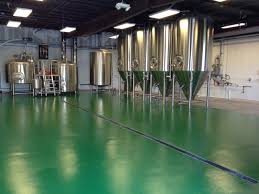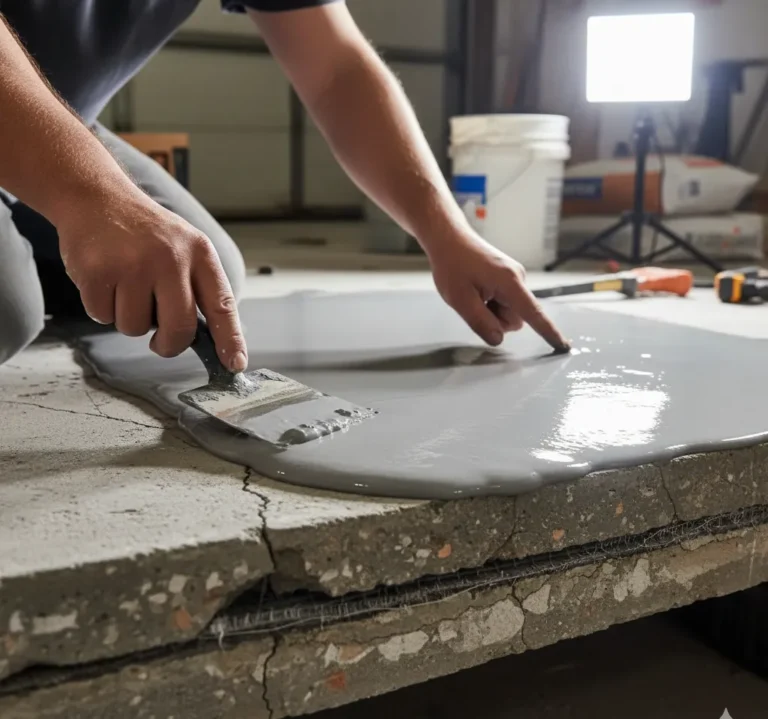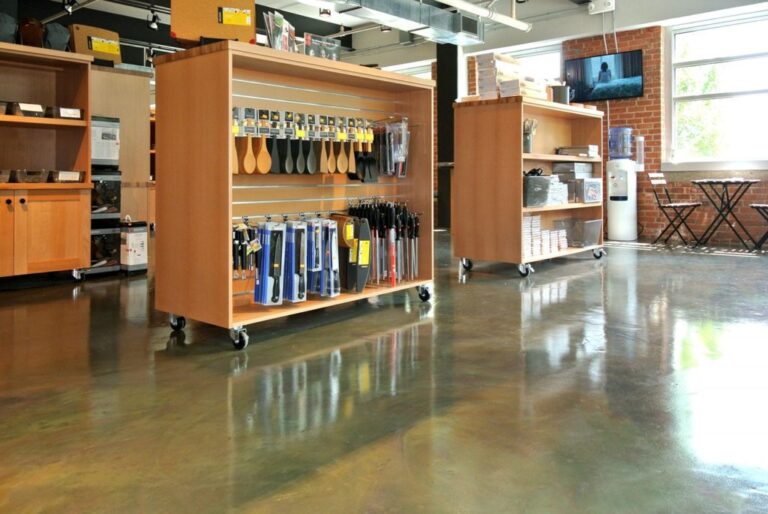Introduction to Microtopping for Basement Renovations
Understanding Microtopping and Its Benefits for Basements
Microtopping is a thin, cement-based coating that can be applied to various surfaces, including floors and walls. It is particularly beneficial for basements due to its ability to create a seamless, durable, and aesthetically pleasing finish. This versatile material can transform a dull basement into a stylish and functional space.
- Seamless Finish : Microtopping provides a smooth, continuous surface without joints or grout lines.
- Durability : It is resistant to wear and tear, making it ideal for high-traffic areas.
- Aesthetic Appeal : Available in various colors and finishes, microtopping can mimic the look of polished concrete, stone, or even wood.
The Versatility of Microtopping in Basement Design
Microtopping is not just for floors; it can be used on walls, countertops, and even furniture. This versatility allows for cohesive design throughout the basement, creating a unified look that enhances the overall aesthetic.
- Walls : Microtopping can be applied to walls to create a seamless look that complements the floor.
- Countertops : It can be used to create custom countertops that match the flooring.
- Furniture : Microtopping can be applied to furniture pieces for a unique, cohesive design.
Microtopping for Basement: A Comprehensive Guide
The Basics of Microtopping Application in Basements
Applying microtopping involves several steps, starting with surface preparation and ending with sealing. Proper application ensures a durable and long-lasting finish.
- Surface Preparation : The existing surface must be clean, dry, and free of any contaminants.
- Application : Microtopping is applied in thin layers, usually with a trowel or squeegee.
- Sealing : A sealer is applied to protect the surface and enhance its appearance.
Why Choose Microtopping for Your Basement Floors and Walls?
Microtopping offers several advantages over traditional flooring and wall finishes, making it an excellent choice for basements.
- Moisture Resistance : Microtopping is less porous than concrete, making it more resistant to moisture.
- Easy Maintenance : It requires minimal maintenance, just regular cleaning with a damp mop.
- Customizable : Available in various colors and finishes, microtopping can be customized to suit any design preference.
Design Possibilities with Basement Microtopping 
Achieving a Polished Concrete Look with Grey Microtopping
Grey microtopping can mimic the look of polished concrete, offering a sleek and modern aesthetic. This finish is perfect for contemporary basement designs.
- Modern Aesthetic : Grey microtopping provides a clean, industrial look.
- Versatility : It can be paired with various design elements, from minimalist to eclectic.
- Durability : The polished finish is resistant to stains and scratches.
Creative Ideas for Microtopping Finishes in Basement Spaces
Microtopping can be customized with various finishes to create unique and personalized basement spaces.
- Textured Finishes : Add texture to the surface for a more tactile experience.
- Colored Microtopping : Use different colors to create patterns or designs.
- Stamped Patterns : Incorporate stamped patterns to mimic the look of stone or tile.
The Practical Advantages of Microtopping in Basements
Durability and Maintenance of Microtopped Basement Surfaces
Microtopping is known for its durability and low maintenance requirements, making it ideal for basements.
- Wear Resistance : It can withstand heavy foot traffic and resist wear and tear.
- Easy Cleaning : Simply sweep and mop to keep the surface clean.
- Stain Resistance : Sealed microtopping is resistant to stains from spills and dirt.
The Cost-Effectiveness of Microtopping for Basement Renovations
Microtopping is a cost-effective solution for basement renovations, offering a high-end look without the high-end price.
- Affordable : Less expensive than other flooring options like hardwood or tile.
- Long-Lasting : Its durability means fewer replacements and repairs over time.
- Low Maintenance : Reduces the need for costly cleaning products and services.
Installation Process of Microtopping in Basements
Preparing Your Basement for Microtopping Application
Proper preparation is crucial for a successful microtopping application. This involves cleaning, repairing, and priming the existing surface.
- Cleaning : Remove any dirt, dust, or debris from the surface.
- Repairing : Fix any cracks or holes in the existing surface.
- Priming : Apply a primer to ensure proper adhesion of the microtopping.
Step-by-Step Guide to Applying Microtopping in a Basement
Applying microtopping involves several steps, each crucial for achieving a smooth and durable finish.
- Mixing : Prepare the microtopping mixture according to the manufacturer’s instructions.
- Application : Apply the first layer using a trowel or squeegee.
- Smoothing : Smooth the surface to remove any imperfections.
- Drying : Allow the first layer to dry completely before applying additional layers.
- Sealing : Apply a sealer to protect the surface and enhance its appearance.
Comparing Basement Surface Options
Microtopping vs. Stamped Concrete: Which is Better for Basements?
Both microtopping and stamped concrete have their advantages, but microtopping offers several benefits that make it a better choice for basements.
- Seamless Finish : Unlike stamped concrete, microtopping provides a seamless surface.
- Customization : Microtopping offers more customization options in terms of color and finish.
- Ease of Application : Microtopping is easier to apply, especially in confined basement spaces.
| Feature | Microtopping | Stamped Concrete |
| Seamless Finish | Yes | No |
| Customization | High | Moderate |
| Ease of Application | Easy | Moderate |
The Aesthetic Appeal of Acid-Stained Floors vs. Microtopping
Acid-stained floors offer a unique look, but microtopping provides more versatility and durability.
- Color Options : Microtopping offers a wider range of color options.
- Durability : Microtopping is more resistant to wear and tear.
- Maintenance : Microtopping requires less maintenance compared to acid-stained floors.
Enhancing Your Basement with Microtopping Textures and Colors
Customizing Your Basement with Acid-Stained Microtopping
Acid-stained microtopping can create a unique, marbled effect that adds character to your basement.
- Unique Patterns : Acid staining creates one-of-a-kind patterns.
- Color Depth : The staining process adds depth and richness to the color.
- Durability : The stain penetrates the microtopping, making it resistant to fading.
Incorporating Stamped Patterns and Textures with Microtopping
Stamped patterns and textures can add visual interest and tactile appeal to your basement surfaces.
- Variety of Patterns : Choose from a wide range of patterns, from stone to wood.
- Textured Surfaces : Add texture for a more tactile experience.
- Custom Designs : Create custom designs to suit your personal style.
Microtopping for Basement Walls and Features 
Applying Microtopping on Basement Walls for a Cohesive Look
Applying microtopping to basement walls can create a cohesive look that ties the entire space together.
- Seamless Design : Create a seamless transition between floors and walls.
- Durability : Microtopping on walls is resistant to scratches and dents.
- Aesthetic Appeal : Enhance the overall aesthetic of your basement with a unified look.
Creating Artificial Rocks and Stamped Wall Effects with Microtopping
Microtopping can be used to create artificial rocks and stamped wall effects, adding a unique touch to your basement.
- Realistic Look : Mimic the look of natural stone or rock.
- Customizable : Create custom designs to suit your style.
- Durable : The durable finish is resistant to wear and tear.
Innovative Uses of Microtopping in Basement Spaces
Transforming Basements into Sensory Spaces with Microtopping
Microtopping can be used to create sensory spaces in basements, enhancing the overall experience.
- Textured Surfaces : Add texture to create a tactile experience.
- Color Options : Use different colors to create a visually stimulating environment.
- Durability : The durable finish is perfect for high-traffic sensory spaces.
Designing a Presentation Area with Microtopping Aesthetics
Microtopping can be used to create a stylish and functional presentation area in your basement. Microtopping countertop refinishing Microtopping texture enhances concrete finishes by adding a thin layer of special material on top of existing concrete surfaces This process makes the concrete look smoother and more attractive while also protecting it from wear and tear
Microtopping economics calculation Stylish microtopping stations are cool spots where you can add fun toppings to your food These stations let you customize your meals with tasty extras in a fancy way Sleek workspace surfaces make your desk look clean and modern They give you plenty of room to work comfortably on your computer or do other tasks
Microtopping enhances soundproofing by adding a thin layer of special material to walls and floors This extra coating helps block out noise and makes rooms quieter Uberdek transforms exteriors by giving homes and buildings a fresh new look It can change old and boring surfaces into beautiful and modern designs that everyone will love
- Seamless Finish : Create a smooth, professional-looking surface.
- Customizable : Customize the color and finish to suit your needs.
- Durable : The durable finish is perfect for high-traffic areas.
Maintaining Your Microtopped Basement
Tips for Cleaning and Upkeeping Microtopped Surfaces
Maintaining microtopped surfaces is easy with regular cleaning and proper care.
- Regular Cleaning : Sweep and mop regularly to keep the surface clean.
- Avoid Harsh Chemicals : Use mild cleaning solutions to avoid damaging the surface.
- Sealing : Reapply the sealer as needed to maintain the finish.
Long-Term Care for Microtopping in Basement Environments
Long-term care is essential for maintaining the appearance and durability of microtopped surfaces.
- Regular Inspections : Inspect the surface regularly for any signs of damage.
- Prompt Repairs : Address any cracks or chips promptly to prevent further damage.
- Re-Sealing : Reapply the sealer every few years to maintain the finish.
FAQs on Microtopping for Basement
How to Choose the Right Microtopping Product for Your Basement?
Choosing the right microtopping product depends on your specific needs and preferences. Consider factors like color, finish, and durability when selecting a product. Consulting with a professional can also help you make an informed decision.
Can Microtopping Be Used in Basement Showers and Wet Areas?
Yes, microtopping can be used in basement showers and wet areas. Its moisture-resistant properties make it an excellent choice for these spaces. However, proper sealing is essential to prevent water damage.
What Are the Color Options Available for Basement Microtopping?
Microtopping is available in a wide range of colors, from neutral tones to vibrant hues. You can also customize the color by mixing different pigments. This allows you to create a unique look that suits your design preferences.
How to Repair Damages on Microtopped Basement Surfaces?
Repairing damages on microtopped surfaces involves cleaning the area, applying a patching compound, and re-sealing the surface. For extensive damage, it may be best to consult a professional to ensure a seamless repair.
Is DIY Micro-Topping a Viable Option for Basement Renovations?
DIY micro-topping is possible, but it requires careful preparation and application. If you have experience with similar projects, you may be able to achieve good results. However, for the best outcome, hiring a professional is recommended.





